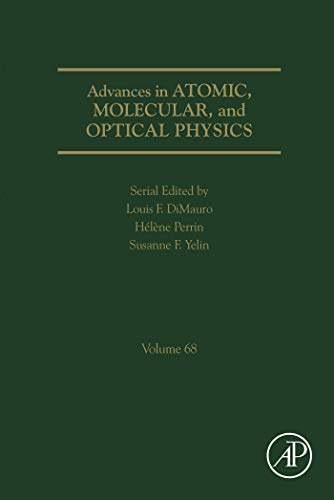Optics and lasers represent fundamental areas of study within the realms of physics and engineering. As we delve into the intricacies of light behavior, we find ourselves not only observing phenomena but also contemplating profound implications that have far-reaching effects on numerous scientific disciplines. A plethora of books exist on these topics, each contributing unique insights into the multifaceted nature of optics and laser technology. Herein, we explore an assortment of seminal works and contemporary texts that not only illuminate basic principles but also delve into advanced applications and theoretical constructs.
1. “Principles of Optics” by Max Born and Emil Wolf
First published in 1959, “Principles of Optics” is often considered the quintessential textbook on the subject. This tome provides an exhaustive examination of wave optics, laying down the mathematical foundations required to grasp the nuances of light propagation, interference, and diffraction. Certainly, the rigorous treatment of electromagnetic theory offered herein allows for a profound appreciation of how light behaves under various conditions. The amalgamation of theoretical rigor with practical applications makes it indispensable for both students and seasoned physicists. This book encourages readers to ponder the very nature of light, revealing not only its dual wave-particle character but also its intricate relationship with the physical universe.
2. “Optics” by Eugene Hecht
Offering a contemporary perspective, Eugene Hecht’s “Optics” is a staple in academic environments across the globe. Renowned for its clarity, it elucidates complex concepts such as geometrical optics, physical optics, and modern applications of laser technologies. What sets this work apart is its integration of historical context, discussing influential figures and milestone discoveries that shaped the field. Hecht’s articulate narrative coupled with illustrative diagrams prompts readers to reflect upon the historical journey of optical science. The inflection points in the timeline provoke questions about how contemporary advancements could influence the future of this captivating field.
3. “Laser Electronics” by Joseph T. Verdeyen
This text is frequently referenced in the study of laser technology, providing a detailed examination of the principles governing laser performance and applications. Verdeyen’s work delves into the intricate mechanics of laser operation, transitioning from fundamental atomic physics to the engineering principles necessary for laser design. His methodological approach enables readers to appreciate the central role lasers play in diverse applications ranging from telecommunications to medical surgery. The book serves as a testament to the power of lasers, synonymous with our era’s technological advancements, while elucidating the underlying science.
4. “Introduction to Modern Optics” by Grant R. Fowles
An essential read for anyone approaching optics from a fundamental perspective, Fowles’ book addresses modern applications while retaining an emphasis on core principles. The text elegantly navigates the transition from traditional optics to modern practice, encompassing topics like polarization, optical instruments, and diffraction. Its intuitive design allows for seamless absorption of complex theories, making it particularly accessible for undergraduate readers. Within this framework, readers are encouraged to consider the implications of optical phenomena on other scientific fronts, fostering a deeper curiosity about the interfaces of physics and technology.
5. “The Science of Laser” by Robert W. Waterman
Waterman’s exploration into laser science reveals the pivotal role that lasers play in advancing scientific understanding and practical applications. Comprehensively covering the principles of laser operation, he articulates the fundamental processes such as stimulated emission and cavity design. The text further emphasizes the wide-ranging implications of laser technology, including its transformative effects on manufacturing, telecommunications, and even entertainment. Waterman’s clarity and precision articulate the essence of lasers as tools that extend our capabilities, boundlessly expanding the frontiers of science.
6. “Optical Resonators: Fundamentals, Advanced Concepts, and Applications” by J. A. John & S. R. K. Lakhani
This advanced text delves into the heart of laser construction and functionality, emphasizing the significance of optical resonators. The authors elucidate both foundational concepts and complex constructs inherent to the design and optimization of resonators. Embedded within the text is a comprehensive discussion of applications ranging from photonics to spectroscopy. This resource is an invitation for academic exploration, challenging readers to contemplate solutions to practical engineering problems through the lens of photonic principles.
7. “Introduction to Optics” by Douglas F. Gibbons
Gibbons presents a unique approach, combining extensive theoretical insight with a plethora of practical experiments that readers can perform. The emphasis on hands-on experimentation allows students to internalize concepts through empirical observation, thus fostering a deeper understanding of light and its interactions. Gibbons’ alignment of theory with experimentation invites the reader to engage critically with the material, laying the groundwork for innovative thought and discovery in the field of optics.
8. “Fundamentals of Photonics” by Christian Brosseau and Philippe A. Soucy
This comprehensive text amalgamates essential principles of both optics and laser science, spanning quantum optics to nonlinear effects. Brosseau and Soucy provide a thorough foundational understanding while incorporating cutting-edge developments within the field. The text encourages readers to explore the interconnectedness of optics with various scientific domains, thus enhancing their appreciation for the profound relevance of optical studies. The depth and breadth of this book not only appeal to upper-level undergraduate students but also to those at the graduate level seeking a robust resource.
In conclusion, the exploration of optics and lasers unveils a wealth of knowledge that transcends mere observations of light. These aforementioned texts demonstrate the beauty, complexity, and fascination inherent in optical science. By engaging with this literature, readers not only increase their understanding of core concepts but also contemplate broader existential questions regarding light’s role in our understanding of the universe. Each book serves not only as an educational tool but also as an invitation to explore deeper curiosities that lie at the intersection of scientific inquiry and human experience.










